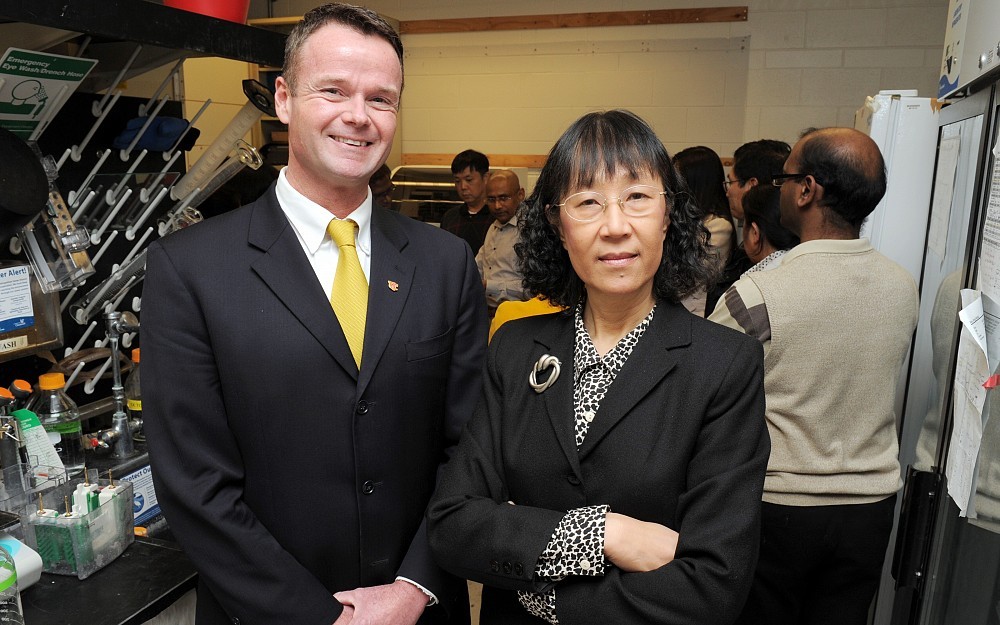
Master's of Public Health Program Moves to Environmental Health
Change, although sometimes scary, isnt always a bad thing and usually provides opportunities for new experiences and growth.
With the transition of the Masters of Public Health (MPH) program to the department of environmental health, which is chaired by Shuk-mei Ho, PhD, Bill Mase, DrPH, program director, says this change essentially means a more robust program for students who come to UC for public health training.
"Although the program was successful in the department of public health sciences, this move is not only expanding the potential future development of concentration offerings, but it is also increasing the number of expert faculty and research funding opportunities available to students.
The department of public health sciences, which has housed the program for about two years, was dissolved in early November.
Mase says that as part of the move, which also includes collaborating more closely with the department of family and community medicine, the program intends to offer concentrations in biostatistics, epidemiology and environmental health, building on the already existing concentrations of leadership, management and policy and health education.
"Previously, we only had six full-time faculty members in the program, he adds. "Now, we have 57, and many of these researchers and educators are world-renowned in their field. This is strategic positioningan opportunity that Dean (Thomas) Boat saw as a way to build our program around the existing strengths of the department of environmental health.
Boat says that the MPH program allows UC to make a unique contribution to the area.
"With the strengths of both environmental health and MPH, we are in a very favorable position to be a national leader in public health education, he adds. "The MPH program has so many obvious opportunities, and it just made sense to place the program in a department with so many similar strengths.
Ho welcomes this addition to her department.
"The MPH program already has a reputation for quality and has produced some very impressive students, she says. "These attributes will undoubtedly allow the program to flourish within the department of environmental health, hence elevating the status of the College of Medicine and bringing further global attention to the university.
"Were very happy to take part in this exciting endeavor.
Mase says that in addition to the active research and funding resources within environmental health, which will further the education of students in the program, the complementary aspects and goals of the programs are numerous.
"Its really a logical placement, he says. "Our missions coincide. Were both focused on studying how societal and environmental factors affect health outcomes, as well as methods of control and prevention.
"Our students have always been first-rate and have gone on to do incredible things in the public health spectrum, but with these additional resources, well be able to attract a different kind of studenta student who is focused on the hard science of public health.
In addition to a larger enrollment, Mase says the program is already on track to be accredited, with a full site visit occurring in March 2012 and the final review process later in the spring.
There are also plans to expand the program further with a global health concentrationa major part of this track will be led by Family and Community Medicine Chair Philip Diller, MDas well as the introduction of a PhD/MD program in public health sciences.
"Im so pleased to have this chance to help the program expand, and Im honored to work with Dr. Ho to help it get there, Mase says.

Shuk-mei Ho, PhD, and Bill Mase, DrPH
Related Stories
WLWT: Tips to fight off bad allergy symptoms
April 18, 2024
The University of Cincinnati's Ahmad Sedaghat spoke with WLWT about how Cincinnati's geography tends to make allergy symptoms worse and tips to fight off those symptoms.
Medscape: Skin adverse events rare after immunotherapy to treat...
April 17, 2024
Medscape highlighted University of Cincinnati research published in JAMA Dermatology that found skin adverse events were rare following immunotherapy treatments for certain skin cancers.
UC researchers develop new CPAP device
April 17, 2024
Researchers at the University of Cincinnati are developing a VortexPAP machine that takes advantage of vortex airflow technology. A preliminary clinical study with current CPAP users demonstrated that the VortexPAP can deliver the pressure levels that are used in the subjects’ CPAP therapy, but the mask is more comfortable to wear. It has a minimalistic design that is less intrusive and barely touches the patient’s face.
